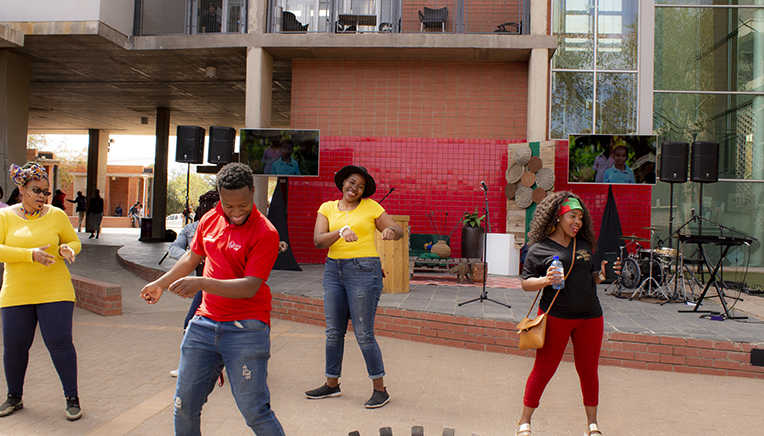There are 195 countries in the world and the University of the Free State (UFS) officially has a personal relationship with 24 of them. Be it through exchange inbound or outbound programmes or research collaboration, Kovsies is growing its global footprint.
The 2019 International Cultural Diversity Festival brought a mix of music, dance, and poetry to the Bloemfontein Campus on Friday 13 September 2019. The aim of the festival was to recognise, appreciate and celebrate the diverse cultures represented on all our campuses.
Reeling in and rolling out the best talent pool
As stated in the 2018 Internationalisation Report, “Kovsies currently has about 50 international collaboration agreements, and collaboration with 1 584 institutions,” in terms of research. The plan is to widen researchers’ international networks, with a special focus on the African continent.
Finding strength in diversity
“Diversity within groups at the UFS necessitates that we foster a culture of tolerance and a spirit of mutual acceptance and appreciation at our university,” says Chevon Slambee, Chief Officer at the Office for International Affairs (OIA).
Slambee spoke on behalf of the Vice-Rector: Research and Internationalisation, Prof Corli Witthuhn, and the Director of the OIA, Cornelius Hagenmeier, commending the diversity reflected in our international students and staff community.
She mirrored the views of the Kovsie community at large in calling for an end to division and violence based on “othering”. Referring to the upsurge in violence directed against women and people from other countries that we saw in South Africa last month, Slambee remarked: “We are shocked and speechless in light of these events, which are contrary to the spirit of embracing one another’s humanity, which we believe in and want to promote.”

The International Cultural Diversity was filled with entertainment.
A coming together
The festival theme this year was the Boma which is a traditional space created back in the day where a community would sit around the fire, drumming, singing, dancing and listening to tales told by the elders. The UFS strives to be a similar space – growing the current number of international relationships and immersing the institution in the global village – the African way.